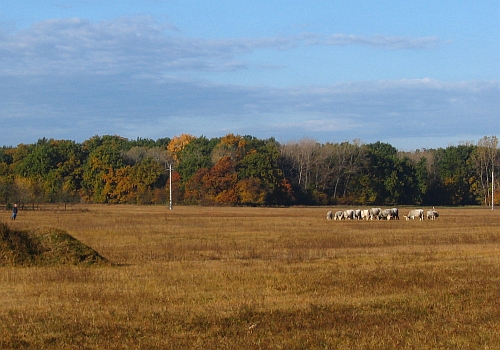History
The Steppe Oak Woods of Nagykőrös have successfully escaped the transformation of landscape, typical for the whole Great Plain, however their status is fragile.
 In the early historical times the low and scattered population dealt with cultivation and grazing among the woods, marshes and sand dunes of the Great Plain. In the early historical times the low and scattered population dealt with cultivation and grazing among the woods, marshes and sand dunes of the Great Plain.
Many “bills” remained from the Turkish times, which prove that an enormous quantity of timber was delivered for the Turks from Nagykőrös. Much timber was used for nitrate cooking, construction of dykes and also for leather tanning.
In the beginning of the 19th century new settlers appeared in the area and the size of population increased. Population growth severely affected the sand steppe woods with the establishment of farms, increased deforestation, taking of plough-lands, mowing and grazing, oak masting and water regulation of marshes. These processes were accelerated by the river regulations that started in the middle of the 19th century. At the beginning of the 20th century, the distribution of ancient sand steppe oak woods decreased to half of their extension in the 18th century. Their territory has been continuously decreasing since then.
From the second half of the 20th century the reshaped landscape was reforested with Black Locust and other alien species. These widespread species characterise the Great Plain since then, in many places the traces of the original vegetation are hardly found. The forest block containing Nagykőrös Woods is a fortunate exception; though a major part of it is also made up from plantations of alien species. The clear cutting forest management has been practiced until presently, which presents the biggest threat for the survival of sand steppe oak woods.
The recognition of nature conservation values of the area started already in the 19th century; though only a small part (Strázsa Hill, an area of local nature conservation significance) gained protected status in 1978, and the whole of the area lacked any conservation measures until becoming part of Natura 2000 network.
|